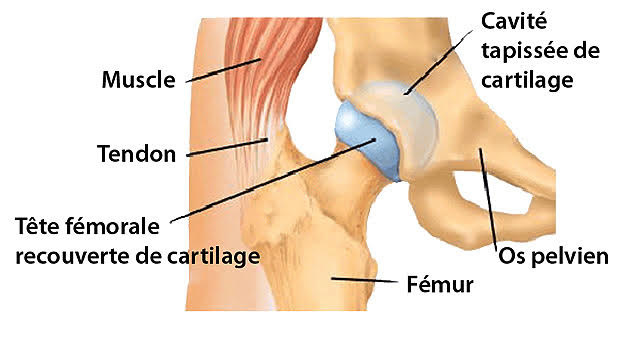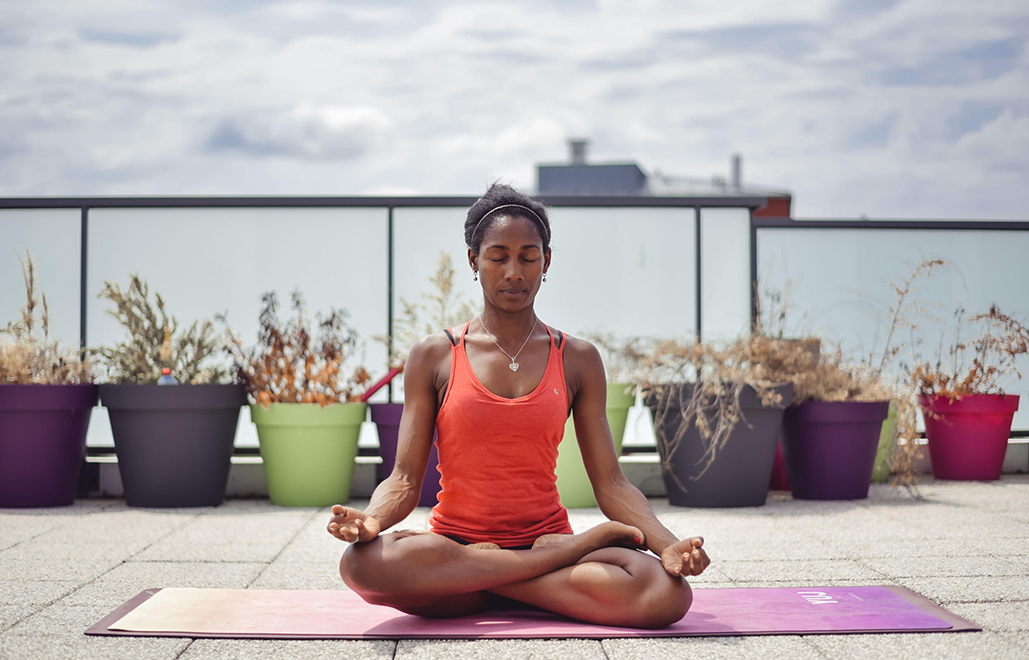Focus on the hips for yoga
Do you know exactly where to locate the hips, on your body? What is their role and how do they function? Often we think we know, but in reality we are far from fully aware of their role and the importance of keeping them in good working order. Did you know that locked hips can cause back pain? In the knees? Or prevent you from walking? That an overly sedentary and stressful lifestyle can alter their proper functioning?
A little anatomy
The hips, otherwise known as the hip joint, are located in the "saddlebags". You can't usually feel them under your fingers when looking for them, as they are hidden under several layers (skin, fat, muscles, tendons). This joint houses the head of the femur bone at the very top of the thigh. The joint is secured by a network of ligaments that guarantee its stability and mobility. The joint is secured by a network of ligaments that ensure its stability and mobility. Thus, thanks to the mobility of the hip, we can rotate the upper body without moving the legs. Or, on the contrary, we can swing our legs while keeping our torso still. And we can simply stand and walk. It sounds obvious, but it's not! We must be aware that without the hips, or just with a reduction of its amplitude, the whole skeletal edifice is unbalanced and therefore "seized".

Locating the hip on yourself
To be fully aware of it, of this joint and locate it easily, put your hand on the side of the buttock. Then raise one foot, keeping the leg straight, and rotate by turning the thigh inward, then outward, alternately. Can you feel it under your hand? It turns and moves inside. So you're mobilizing your hip joint.
Isolating hip movements
To be fully aware of your hips, you need to know what kind of movements they make. Internal rotation: your thigh rotates inward.External rotation: your thigh rotates outward.Adducted flexion: your thigh moves toward the center of the body.Abducted flexion: your thigh moves away from the center of the body.Flexion: your thigh moves toward the torso.Extension: your thigh moves toward the back of the body.
Hips in yoga
Their mobilization is paramount. Blocked hips give blocked postures. And therefore discomfort in movement and undue mobilization of some other muscles, tendons or even joints. Of course, there is no fatality there. Yoga is there to help to find a suitable amplitude of movement, then to maintain this mechanics thereafter.The hips are very often mobilized with yoga. The hips are very often mobilized in yoga. During the postures in front bending, for the gaps of the legs, the extensions back, the torsion of the bust, etc... Nevertheless, when we are not conscious of them, when we do not feel them especially or when we do not locate them well, how could we make them work correctly? Because when we do not mobilize them correctly while we try to enter a specific posture, it is another joint which suffers from it: that of the knees, or even the back! Thus, at the time of your sessions of yoga asana, always keep in mind that your postures are organized around the placement of your hips. Correctly and consciously mobilized hips give a very special stability to any posture.



 de
de 
